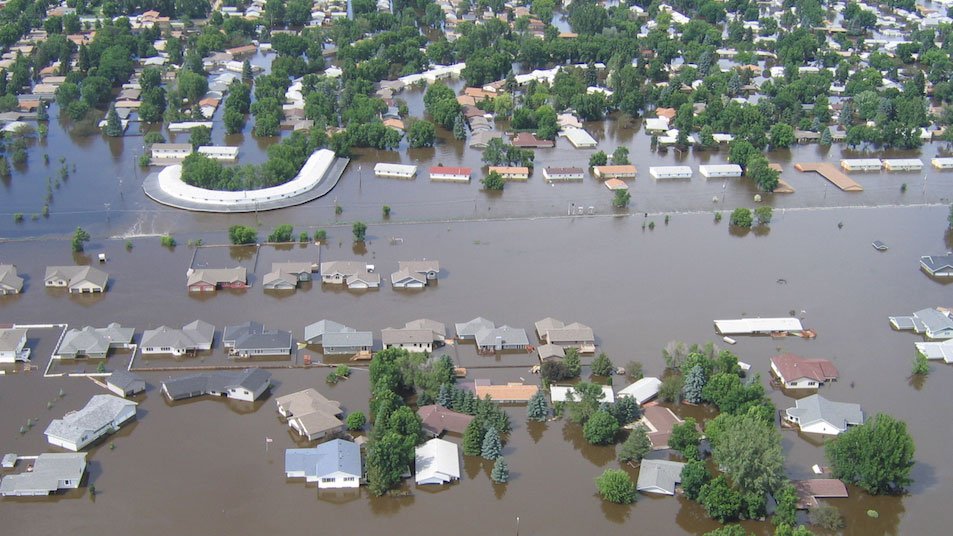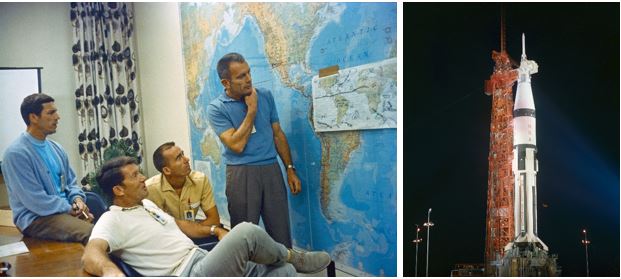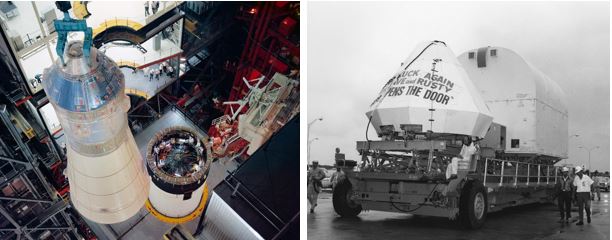One week to go until the launch of Apollo 7! On October 11, 1968, Americans astronauts would return to space and take the next steps toward achieving the goal of landing on the Moon before the end of the decade. Apollo 7 crewmembers Walter M. Schirra, R. Walter Cunningham, and Donn F. Eisele had completed all their preflight training and were essentially ready to fly the mission. Primary objectives of this first crewed Apollo flight were to thoroughly test the spacecraft systems in a mission lasting up to 11 days, practice rendezvous operations with the spent S-IVB stage of the launch vehicle, and conduct 8 burns of the Service Module’s propulsion system, including the final deorbit burn to bring spacecraft and crew back to Earth.
Senior management from NASA Headquarters, the Kennedy Space Center (KSC), the Marshall Space Flight Center, and the Manned Spacecraft Center (now the Johnson Space Center) met at KSC on October 3 for the Apollo 7 Flight Readiness Review. At the conclusion of the meeting, NASA declared the crew, the space vehicle, and all supporting elements, such as Mission Control, the Manned Space Flight Tracking Network, and recovery forces, ready for flight. Management emphasized the open-ended nature of the planned 11-day mission. As the first crewed Apollo flight, the mission’s duration would be assessed as objectives were completed along with the condition of the spacecraft and the health of the crew. To maximize the chances of mission success, critical objectives were scheduled early in the flight so that 90 percent would be met by the end of the second day. The countdown for the launch of Apollo 7 began October 6.
Elsewhere at KSC, NASA readied spacecraft for future missions. Workers transferred the Apollo 8 Command and Service Module (CSM) and Spacecraft Lunar Module Assembly (SLA) from the Manned Spacecraft Operations Building (MSOB) to the Vertical Assembly Building (VAB) on October 7. Since Apollo 8 did not plan to carry a Lunar Module, NASA managers decided to fly the Lunar Module Test Article-B to simulate its mass. Once at the VAB, technicians stacked the CSM/SLA atop its Saturn V rocket in preparation for the rollout to the launch pad two days later. The mission was planned for December, but its objective was still under consideration, dependent on the success of Apollo 7.
The Command Module and Service Module for the Apollo 9 mission arrived at KSC October 7. Engineers mated the two modules in the MSOB altitude chamber three days later. The LM for Apollo 9 had arrived at KSC in June, and engineers and astronauts were already testing its systems. In parallel, workers in the VAB stacked the first three stages of the Saturn V during the first week of October. The launch of Apollo 9 was planned for February 1969.
With all this work to prepare for challenging space flights, NASA employees took some time out to celebrate the Agency’s 10th anniversary on October 1. Several centers held open houses to commemorate the event, celebrate the Agency’s great accomplishments during its first 10 years, and consider how close President John F. Kennedy’s goal of landing a man on the Moon was to becoming a reality.





























